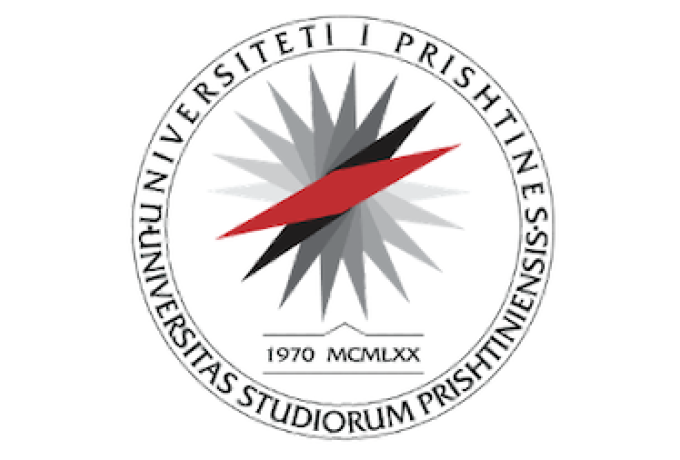International Mobility and Its Impact on University Teaching Practices
International Mobility and Its Impact on University Teaching Practices
Prof. Assoc. Dr. Arlinda Beka
Faculty of Education, University of Prishtina
Abstract:
International mobility is vital in the professional development of university academics, providing them with unique opportunities to improve their pedagogical skills, conduct research, and build worldwide academic networks. This article examines the impact of global mobility on university education, focusing on how interaction with varied educational frameworks and cultural settings can influence educational improvement. This paper examines the impact of worldwide mobility on university coaching, focusing on how engaging with diverse academic frameworks and cultural situations can influence faculty development. These include developing cross-cultural competencies, implementing new teaching methods, and expanding chances for instructional collaboration. Furthermore, it emphasizes how international mobility promotes lifelong learning and raises teachers' awareness of the changing demands of the worldwide instructional network. According to the study, worldwide mobility benefits professors by broadening their teaching practice, encouraging academic innovation, and increasing higher education's internationalization.
Keywords: international mobility, university, teaching, higher education.
Introduction
International mobility has evolved as an essential component of professional development for university academics worldwide, providing valuable chances for improvement in both teaching and research. With globalization transforming the higher education landscape, university faculty members are progressively broadening their knowledge through the use of enticing, diverse instructional systems, cultures, and educational networks. The University of Prishtina, one of Kosovo's most major higher education institutions, recognizes the value of global mobility in promoting the professional development of its academics. Over the years, professors from many departments have participated in mobility programs spanning Europe, America, Asia, and beyond, improving their teaching methods and techniques. These global examples introduced professors to new pedagogical methods, technology advancements, and novel study paradigms that they could apply back in their classrooms and institutions. The University of Prishtina has supported its college's participation in a wide range of global conferences, research collaborations, visiting scholar exchanges, and educational development programs through specific international mobility programs (such as Fulbright, TLP, Erasmus, and others). These overseas mobility experiences enhanced the professors' pedagogical abilities while also facilitating the development of their intercultural skills and the building of valuable global collaborations.
This article explains the impact of international mobility exchanges on the professional development of University of Prishtina academics. By showcasing the benefits and challenges faced by university contributors who have engaged in mobility applications, it is clear how these opportunities have aided the university's vision and goal of educational excellence, internationalization, and innovation. The essay also goes into how such stories impact the larger educational environment, influencing the coaching practices and research findings of professors who return with new perspectives and understanding gained through overseas contacts.
Institutional Support and Policy Frameworks
Institutional support and the implementation of comprehensive coverage frameworks have a significant impact on the success of global mobility applications. Universities that promote international involvement and provide adequate resources and incentives for faculty participation in mobility programs will be more successful in achieving their internationalization goals. The University of Prishtina's Faculty of Education, for example, has prepared a development plan that highlights the importance of international cooperation and instructional professional participation in global mobility (Faculty of Education Development Plan 2022–2026).
Such institutional strategies are critical for creating an environment that supports faculty participation in global sports activities. By linking college improvement opportunities with institutional goals, institutions can increase their global visibility and academic popularity. International mobility has become an important part of professors' professional development, helping to strengthen teaching techniques, research understanding, and educational networks. The mobility of professors across borders for professional responsibilities has far-reaching consequences for both individuals and institutions. The literature study on the topic investigates the benefits of global mobility for university teachers as well as the benefits that universities gain from promoting such opportunities. International mobility allows university teachers to acquire exposure to other academic environments, which is essential for their professional development. Academics who participate in mobility programs can immerse themselves in novel teaching and research methods, gaining insights into revolutionary educational practices and new dispositions in their fields of study. According to research, participating with international academic communities allows faculty members to widen their perspectives, adapt to global educational demands, and incorporate new teaching strategies into their curricula (Pashby, 2017). One of the primary advantages of global mobility is the improvement of teaching skills. Professors that value high-quality instructional structures might adopt a variety of pedagogical approaches and incorporate them into their own teaching methods. This method of perfection not only improves their teaching, but it also allows them to improve their students' learning outcomes and achievement.
Professors returning from foreign mobility programs frequently report increases in their ability to conduct more inclusive and appealing teaching and research activities (Teichler, 2004). In addition to pedagogical improvement, global mobility enhances study skills. Professors who spend time abroad have the opportunity to interact with global studies groups, contribute to international studies collaborations, and expand their research networks. These collaborations usually result in collaborative courses and exposure to novel research and study approaches. As a result, academics engaging in global mobility are better positioned to secure consistent funding, participate in high-impact research, and improve their academic reputations (Findlay, 2017).
Furthermore, international mobility promotes the growth of cross-cultural competencies. Faculty members exposed to multiple cultural surroundings have valuable skills in navigating cultural versions, which they can apply to their interactions with university students, colleagues, and study partners. These qualities are becoming increasingly important in a generation of globalized education, in which professors must be able to interact with a wide range of audiences and understand unique cultural perspectives (Teichler & Höhle 2013).
Global mobility benefits the entire university, not just the individual professors who participate in them. Universities that actively encourage global mobility programs for their students usually have higher academic standing and a more powerful international presence.
Faculty members who participate in mobility applications provide valuable insights that may be shared with colleagues and included in the group's coaching and study activities. As a result of global mobility, the entire educational community gains novel perspectives and information (Kehm, 2007). Furthermore, colleges that support faculty mobility packages contribute to the globalization of better training. As faculty members participate in global collaborations, universities form closer relationships with international institutions. Collaborations such as joint studies, student exchanges, and study tours enhance the college's overall quality and competitiveness (Beine, Noël, & Ragot, 2014). Such global links also provide college students with opportunities for global learning, preparing them to create art in an increasingly interconnected world.
International mobility also contributes to the excellence of academic research. Professors that participate in international research collaborations bring back new ideas, methodologies, and technology that can be integrated into the university's academic calendar. These contacts build a tradition of invention and originality, which drives the growth of contemporary studies programs. Furthermore, institutions that promote global mobility are more likely to attract top-tier students, researchers, and students from across the sector, so raising their educational status (Stohl, 2007). Another benefit for universities is the increase in their popularity as globally engaged institutions. As university students attend worldwide conferences, submit research to international publications, and work with global experts, the university's educational prestige grows. This increased popularity can lead to increased awareness, faster funding opportunities, and more competitive recruitment of college students. Furthermore, a strong global presence can make a university a more enticing place for talented research partners and academic collaborators (AURI, 2015).
To fully enjoy the benefits of international mobility, colleges must provide institutional support for their academic members. This aid might take the form of different office tasks, as well as financial assistance, administrative assets, and guidance in preparing mobility applications.
Universities that prioritize mobility activities provide a supportive environment for faculty, making it considerably easier for professors to participate in international exchanges and research collaborations. In some circumstances, universities provide incentives such as sabbaticals, study grants, or travel charges to encourage university engagement in global mobilities. This type of institutional investment helps the organization achieve its long-term goals, such as boosting academic achievement, increasing research output, and expanding worldwide connections (Findlay, 2017). Such obligations serve to integrate university development with the university's strategic objectives, ensuring that international mobility applications contribute to individual and institutional growth.
Conclusion
International mobility provides significant benefits for both university academics and the institutions to which they belong. For faculty members, mobility supplements instructional techniques, research competencies, and cross-cultural skills, all of which contribute to their overall professional development. Universities, in turn, benefit from the skills, knowledge, and worldwide networks that their students gain through mobility programs. These advantages contribute to the internationalization of better education, improve educational excellence, and strengthen worldwide cooperation.
To achieve these benefits, colleges must invest in programs that promote university mobility, highlighting key assets and offering incentives to encourage involvement. This allows institutions to strengthen their instructional standing, attract top-tier students, and develop a vibrant instructional community that thrives in today's globalized educational scene.
References:
Auri, (2015). The impact of international academic mobility on universities and faculty. Albanian University Research Initiative. Retrieved from https://www.auri.al
Beine, M., Noël, R., & Ragot, L. (2014). Determinants of the international mobility of students. Economics of Education Review, 43, 106-118. https://doi.org/10.1016/j.econedurev.2014.07.004
Findlay, A. M. (2017). International student mobility and the role of academic networks in higher education. Higher Education Quarterly, 71(1), 42-59. https://doi.org/10.1111/hequ.12106
Kehm, B. M. (2007). The internationalization of higher education: A global perspective. International Journal of Comparative Sociology, 48(1), 43-67. https://doi.org/10.1177/0020715207074174
Pashby, K. (2017). Faculty mobility and academic development: Learning and growth across borders. International Journal of Higher Education, 6(2), 109-120. https://doi.org/10.5430/ijhe.v6n2p109
Stohl, M. (2007). The internationalization of the university and the importance of faculty mobility. International Higher Education, 49, 2-3. https://doi.org/10.1002/hequ.12106
Teichler, U. (2004). The changing debate on internationalization of higher education. Higher Education, 48(1), 5-26. https://doi.org/10.1023/B:HIGH.0000033812.84667.c6
Teichler, U., & Höhle, E. A. (2013). The professional development of academic staff through international mobility programs. Studies in Higher Education, 38(7), 996-1012. https://doi.org/10.1080/03075079.2011.642058

Dr. Arlinda Beka is an Associate Professor, at the Faculty of Education, of the University of Prishtina. Her professional expertise is in early childhood education and curriculum development. She is involved in early childhood education research and policies at national and international levels. She is the author of several books and research papers in the field of ECE. She is a member of various boards of international journals and she has been part of various international programs such as Fulbright, TLP, Erasmus, Global+, etc.

